Francesco Bardozzo
ElegansNet: a brief scientific report and initial experiments
Apr 06, 2023Abstract:This research report introduces ElegansNet, a neural network that mimics real-world neuronal network circuitry, with the goal of better understanding the interplay between connectome topology and deep learning systems. The proposed approach utilizes the powerful representational capabilities of living beings' neuronal circuitry to design and generate improved deep learning systems with a topology similar to natural networks. The Caenorhabditis elegans connectome is used as a reference due to its completeness, reasonable size, and functional neuron classes annotations. It is demonstrated that the connectome of simple organisms exhibits specific functional relationships between neurons, and once transformed into learnable tensor networks and integrated into modern architectures, it offers bio-plausible structures that efficiently solve complex tasks. The performance of the models is demonstrated against randomly wired networks and compared to artificial networks ranked on global benchmarks. In the first case, ElegansNet outperforms randomly wired networks. Interestingly, ElegansNet models show slightly similar performance with only those based on the Watts-Strogatz small-world property. When compared to state-of-the-art artificial neural networks, such as transformers or attention-based autoencoders, ElegansNet outperforms well-known deep learning and traditional models in both supervised image classification tasks and unsupervised hand-written digits reconstruction, achieving top-1 accuracy of 99.99% on Cifar10 and 99.84% on MNIST Unsup on the validation sets.
Blind microscopy image denoising with a deep residual and multiscale encoder/decoder network
May 01, 2021

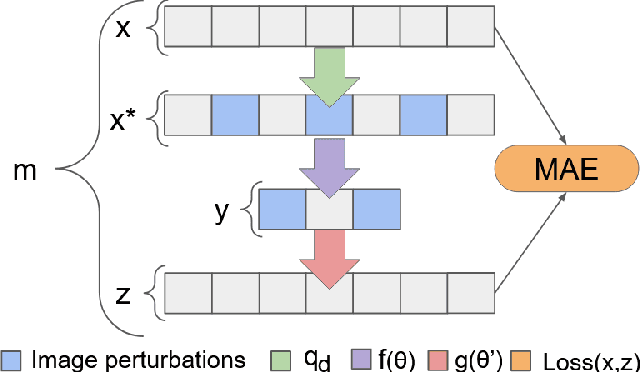
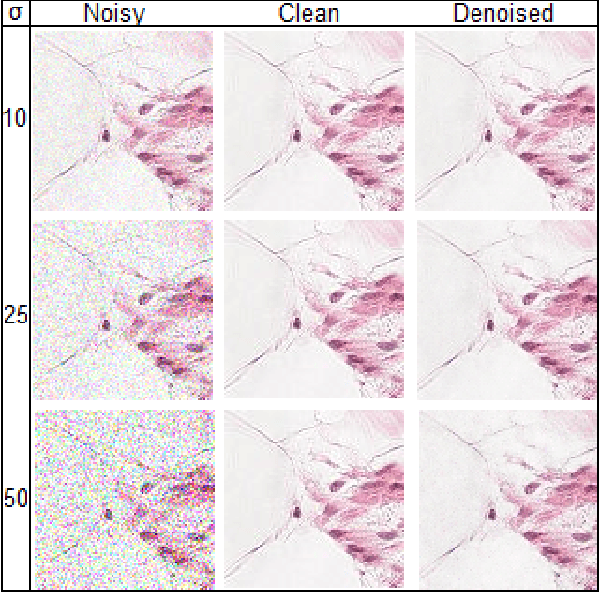
Abstract:In computer-aided diagnosis (CAD) focused on microscopy, denoising improves the quality of image analysis. In general, the accuracy of this process may depend both on the experience of the microscopist and on the equipment sensitivity and specificity. A medical image could be corrupted by both intrinsic noise, due to the device limitations, and, by extrinsic signal perturbations during image acquisition. Nowadays, CAD deep learning applications pre-process images with image denoising models to reinforce learning and prediction. In this work, an innovative and lightweight deep multiscale convolutional encoder-decoder neural network is proposed. Specifically, the encoder uses deterministic mapping to map features into a hidden representation. Then, the latent representation is rebuilt to generate the reconstructed denoised image. Residual learning strategies are used to improve and accelerate the training process using skip connections in bridging across convolutional and deconvolutional layers. The proposed model reaches on average 38.38 of PSNR and 0.98 of SSIM on a test set of 57458 images overcoming state-of-the-art models in the same application domain
Adaptive binarization based on fuzzy integrals
Mar 04, 2020

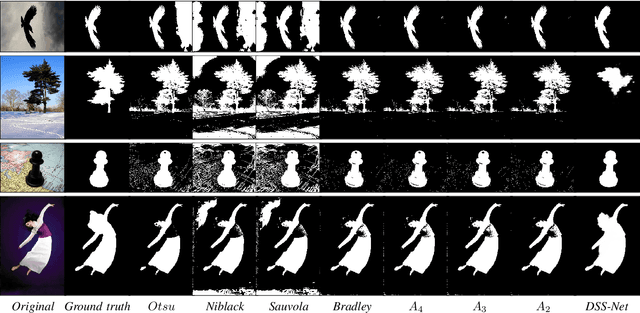
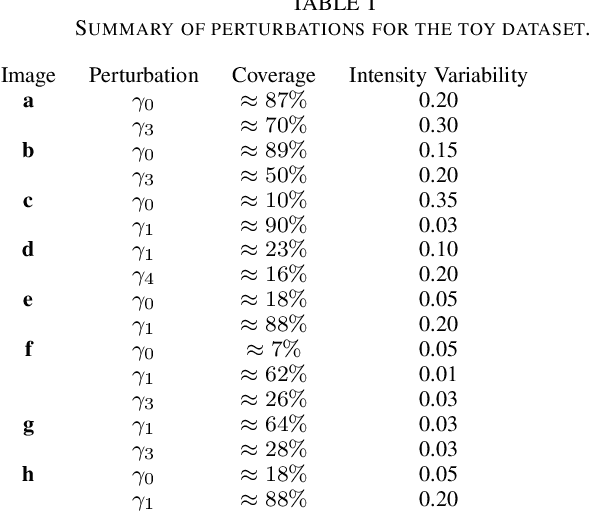
Abstract:Adaptive binarization methodologies threshold the intensity of the pixels with respect to adjacent pixels exploiting the integral images. In turn, the integral images are generally computed optimally using the summed-area-table algorithm (SAT). This document presents a new adaptive binarization technique based on fuzzy integral images through an efficient design of a modified SAT for fuzzy integrals. We define this new methodology as FLAT (Fuzzy Local Adaptive Thresholding). The experimental results show that the proposed methodology have produced an image quality thresholding often better than traditional algorithms and saliency neural networks. We propose a new generalization of the Sugeno and CF 1,2 integrals to improve existing results with an efficient integral image computation. Therefore, these new generalized fuzzy integrals can be used as a tool for grayscale processing in real-time and deep-learning applications. Index Terms: Image Thresholding, Image Processing, Fuzzy Integrals, Aggregation Functions
A machine learning approach to investigate regulatory control circuits in bacterial metabolic pathways
Jan 13, 2020
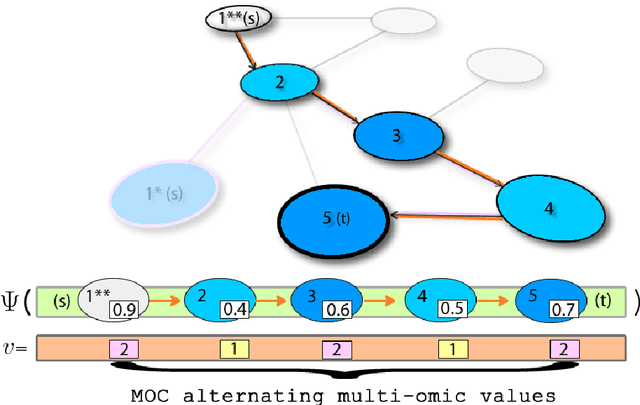

Abstract:In this work, a machine learning approach for identifying the multi-omics metabolic regulatory control circuits inside the pathways is described. Therefore, the identification of bacterial metabolic pathways that are more regulated than others in term of their multi-omics follows from the analysis of these circuits . This is a consequence of the alternation of the omic values of codon usage and protein abundance along with the circuits. In this work, the E.Coli's Glycolysis and its multi-omic circuit features are shown as an example.
* 5 pages, 3 figures
 Add to Chrome
Add to Chrome Add to Firefox
Add to Firefox Add to Edge
Add to Edge